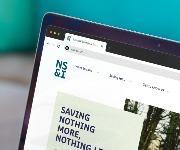Midlife MOT: is it time to review your health, wealth and career path?

Lily Canter explores the midlife financial MOT course from the Open University and whether it’s worth trying out.
My midlife crisis came a little early, in my late 30s.
I had two young children, a long commute, and I was fed up with spending my life in bureaucratic meetings.
With the help of supportive friends, some sessions with a career coach and a good review of my finances, I quit my well-paid, secure, managerial job for the precarious life of a freelance journalist.
It took me two years to have the confidence to take the leap and a tool like the Midlife MOT would have been a godsend at the time.
Devised by the Open University with Legal & General, the Midlife MOT is a free online course for 40 to 60-year-olds covering wealth, work and wellbeing.
The course is divided into five sections and takes around four hours to complete.
It includes videos, templates and quizzes to help you identify your financial and wellbeing needs.
I’ll now explore what to expect in each section and whether it was helpful.
Current finances
The first section is the most comprehensive and really allows you to get a good grip on your finances and identify priorities and savings.
It begins with a look at your current finances and is essentially a budgeting tool.
It encourages you to look in great detail at your household finances including essential spending (mortgage, bills etc.) and discretionary spending (such as meals out and subscriptions).
This leads into a section on assets and liabilities where you consider your debts (credit card, loans, car finance, mortgage) and add up your assets (savings, investments, property, high-value items).
What I found particularly interesting was the simple calculation to work out your wealth score which gives an indication of how secure your finances are.
Then there is a look at savings and how to manage debt. This section gives lots of practical tips and links to external resources.
I really liked the idea of the £500 money-saving challenge which can potentially be achieved by cutting down on meals out, reducing subscriptions and meal planning.
This could offset the current rising cost of living so you don't need to use any emergency funds.
However, as someone who is already doing all the things the course suggested, I decided I needed a different strategy.
I gave myself the goal of increasing my income by a minimum of £500 a year instead.
Confident enough to pick your own stocks? We've teamed up with eToro to help you invest commission-free. Head this way to get started. Capital at risk.
Future plans

Part two of the course looks ahead to where you are going next. It encourages self-reflection and has a useful set of questions and scenarios to consider.
For example, what would you do if you were ill and couldn't work? Are you hoping to help your children with university fees or a house deposit? Do you expect to get an inheritance?
This is followed by a series of planning ahead exercises with a handy table to help estimate future costs.
Once these costs are identified, it talks through investing and savings plans and gives advice on ISAs, investment risk, shares, bonds and ethical investments.
It isn't afraid to deal with more delicate issues like preparing for the worst such as losing a partner, getting divorced, being out of work or falling seriously ill.
I found this section most useful for thinking ahead rather than number crunching and a catalyst for uncomfortable but essential conversations with my husband and parents.
Financial planning: could your family cope if you died suddenly?
Retirement plans
As you would expect in a midlife reflection there is a section on retirement planning which again asks pertinent questions like when are you planning to retire? Will you downsize? Will you supplement your income?
It also explains complex terms like defined benefit and defined contribution and examines the difference between state and private pensions.
This section led to another action for me as it gave me a link to check my State Pension allocation which showed I was eligible for a maximum of £9,371.27 a year from age 67.
Since I plan to be at least semi-retired a long time before I turn 67, this was a usual exercise for working out how much I need to increase my private pension contributions.
There was also a handy link to a document detailing whether your estimated pension pot would support the lifestyle you desire including how many holidays you will be able to afford, your weekly food shop budget in retirement and your clothing allowance.
Career reflection
Part four of the course examines your career, both in the present and future, and gives space for self-evaluation of the types of work you enjoy doing.
It presents questions to consider if you are thinking about a job or career change and offers practical advice on making the most of LinkedIn and updating your CV.
There is even a small section on business idea generation.
As a freelancer, I already do this on a regular basis as I am constantly thinking about expanding my portfolio and the type of work I want to do.
But again, had I been able to access this six years ago when I was unhappy in my job it would have been a great starting point.
Confident enough to pick your own stocks? We've teamed up with eToro to help you invest commission-free. Head this way to get started. Capital at risk.
How to turn your hobby into a career
Pillars of health
The final section is perhaps the weakest and felt a little bit like a last-minute bolt-on.
It covers the "five pillars of ageing well" which are nutrition, hydration, physical activity, cognitive stimulation and social stimulation.
These are arguably the five pillars of living well at any age, but the idea is that middle age is a good time to take stock of your physical and mental wellbeing.
Most of the information is given via a series of ineffective quizzes.
I am incredibly healthy and active but that doesn’t mean I know (or need to know) how many calories one gram of fat provides or my daily intake of fibre in grams.
I felt this section missed the mark slightly and made things too complex rather than giving simple tools for maintaining a balanced diet and healthy lifestyle.
Overall, the MOT was a useful exercise to go through even for someone who is money savvy because there are always resources you don't know about or things you hadn't thought of.
One slight annoyance is that to access all of the functions in the course you need to register an account with the Open University, but it is possible to conduct quite a thorough review without these add-ons.
I would recommend this course to anyone over 40 (or younger) even if you pick and mix the sections you want to look at. Analysing and reflecting on your finances is always a good thing to do and time well spent.
Find out how much income protection costs with ActiveQuote
*This article contains affiliate links, which means we may receive a commission on any sales of products or services we write about. This article was written completely independently.
Most Recent
Comments
Be the first to comment
Do you want to comment on this article? You need to be signed in for this feature








